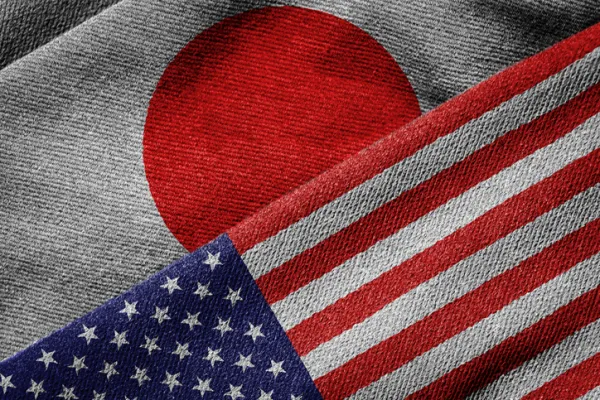Brazil’s asset managers are breathing a bit easier these days. As of mid-June the nation’s benchmark Bolsa de Valores, Mercadorias & Futuros Bovespa index had climbed 43.6 percent off its March low, which represented a 50.7 percent plunge since its May 2008 high. Jittery investors, both foreign and domestic, yanked money out of the market on concerns that the financial crisis roiling developed countries would stop Brazil’s booming economy in its tracks.
“It appears that the worst is over,” says Demosthenes Madureira de Pinho Neto, São Paulo–based head of asset management and executive director of financial institutions at Itaú Unibanco, the firm created through the merger, completed in March, of Banco Itaú, Unibanco Holdings and Unibanco–União de Bancos Brasileiros.
[Click here to view complete results of the 2009 Brazil's Top 20 Money Managers.]
Brazil is emerging from the global meltdown ahead of many other countries for one simple reason: “We did not have a banking crisis, and that makes all the difference,” says Madureira, pointing out that not a single Brazilian bank failed. Owing to a strict regulatory framework that precludes them from leveraging assets to the extent that their counterparts in the U.S. could — and did — Brazilian banks are generally healthy and well capitalized. “It’s interesting that we just found that out after the crisis,” Madureira notes with a chuckle.
Although worldwide financial turmoil caused a sickening 41.2 percent drop in the BM&F Bovespa index in 2008, the effect on Brazil’s top money management firms was muted because only a small portion of their total holdings is in equities, thanks to high interest rates that make fixed-income instruments more attractive to investors. At BB Gestão de Recursos, which repeats in first place on the Brazil 20, Institutional Investor’s second annual ranking of the nation’s leading managers, stocks account for only $19.5 billion of the firm’s $105.2 billion in total assets under management. That total is down 15.5 percent from one year earlier, in dollar terms; in local currency terms BB Gestão de Recursos and several other firms saw their assets under management increase in 2008. The real fell 24.5 percent against the dollar last year.
Caixa Econômica Federal, which rises one spot to take second place, saw its assets under management slip 12.4 percent in 2008, to $76.3 billion; of that total, only $2.8 billion is in equities. Had the Itaú Unibanco merger been completed by year-end 2008, the combined firm would have secured the No. 2 spot (the position Banco Itaú held on its own last year), with $95.4 billion in total assets, but only $8.2 billion in stocks. As it is, Banco Itaú slips one rung to third place, with $73 billion in assets (25.9 percent less than a year earlier), $7.5 billion of which is in equities.
In fourth place again this year is Bradesco Asset Management, whose assets under management slid 23.7 percent last year, to roughly $64 billion. Less than 10 percent of that total is in stocks. Robert John van Dijk, the firm’s director superintendent, says the avoidance of equities turned out to be a smart move for Brazilians.
“If we consider the negative performance of the Bovespa in 2008, and the small decrease in the total assets of Brazilian funds, we can conclude that the impact of the international crisis in Brazilian funds was very low,” says van Dijk, who is based in São Paulo. Total assets of the Brazil 20 fell just 21 percent last year.
Although the crisis appears to be over, at least in Brazil, it was not without its harrowing moments. “We saw high risk aversion from banks in terms of lending and huge uncertainty about how each sector in Brazil would be affected,” notes São Paulo–based Alcir Freitas, who directs equity research coverage of the banks and financial services sector at Itaú Securities. “Money flow suffered, credit was squeezed, and access to lending became very restricted deeply into the fourth quarter of 2008.”
The Brazilian Central Bank’s Monetary Policy Committee swung into action as soon as government figures showed that the economy had stumbled. In January, after the Brazilian Institute of Geography and Statistics reported that Brazil’s real gross domestic product growth had contracted by 3.6 percent in the October-to-December period compared with the third quarter, the committee slashed the benchmark Selic interest rate by a full point, to 12.75 percent, in an effort to increase liquidity and stimulate growth. The Selic has since been cut three more times, with June’s full-point reduction bringing the rate to its lowest level on record, 9.25 percent, even though Brazil’s GDP contraction of 0.8 percent in the first quarter was much slower than many economists had expected and seemed to suggest that the recession would be short-lived.
José Luiz Rosenberis Cunha, Caixa’s portfolio management superintendent, predicts that the rate will remain low, by Brazil’s standards (the Selic topped 40 percent a decade ago), at least through next year. Although reducing interest rates encourages borrowing and helps promote consumer spending and corporate growth, he says, this approach also puts Brazil’s money managers in the uncomfortable position of having to reconsider the fees they charge — 2 percent is currently the norm — because the lower the rate, the lower the nominal gain and the bigger the impact of the fee on the investor’s account balance.
Bradesco’s van Dijk agrees. “When the interest rate was 20 percent, a management fee of 2 percent represented only 10 percent of the Selic reduction in the fund return. But when the Selic rate reaches 10 percent, the same fee represents a loss of 20 percent,” he explains. “We have savings accounts that yield TR plus a 6 percent fixed coupon, without management fees and without income tax, which means that funds with high management fees yield less than savings accounts.” (TR, or taxa referencial, is the rate used to determine yields on passbook accounts; it is based on the average 30-day yield on certificates of deposits issued by Brazil’s top banks and is adjusted monthly.)
Instead of lowering their fees, some fixed-income portfolio managers will choose to chase yield, according to Itaú Unibanco’s Madureira. “In the past it was very easy to manage a fixed-income mandate, because you could invest everything in government bonds and get a decent yield,” he says. Madureira predicts that fund managers will move from plain-vanilla investments to more complex securities, such as derivatives, to boost return and justify what now appears to be a disproportionately high fee.
The low Selic rate may also motivate some investors to allocate more money to Brazilian equities. “It will be a gradual process, but people are starting to realize that if they want more return, they have to take more risk — and that makes the stock market a more attractive investment,” says Madureira.
Brazilian investors had been moving toward equities when the financial crisis hit. The trend began in the middle of the decade, when the BM&F Bovespa index was racking up gains of 26.5 percent in 2005, 34.2 percent in 2006 and 43.6 percent in 2007 (in local currency terms), then it reversed in the fall of 2007 as investors grew worried about collateral damage to Brazil’s economy from the crisis unfolding in the U.S. and other developed markets. The share of money allocated to Brazilian equity funds reached 15.5 percent of the total market in 2007, a record, before dropping back to 10 percent last year, according to Brazil’s National Association of Investment Banks. By last month it had inched up to 11 percent.
Caixa saw its percentage of equities under management fall from 20 percent of its portfolio in mid-2007 to less than 4 percent by year-end 2008, Cunha says; as of last month, it had climbed back to roughly 10 percent. However, that figure reflects recent stock market gains as well as inflows, he notes.
Bruno Pereira, who left UBS Pactual and joined Rio de Janeiro–based asset management firm Leblon Equities in January, says pension funds and retail investors will look more seriously at equities as they watch the returns of their fixed-income investments drop below the yield of savings accounts. “Commercial banks have to face the challenge of developing products that are suitable to the retail segment, and this will gradually lead to additional structural changes in the mutual funds industry and open more room for independent asset managers,” says Pereira, who was the top-ranked analyst in Banking & Financial Services on II’s 2008 All-Brazil Research Team and leader of the first-place troupe in Financial Institutions on the 2008 Latin America Research Team.
Some structural changes are already occurring, as a wave of merger and acquisition activity washes over Brazil’s financial landscape. In addition to the Itaú-Unibanco merger, Bank of New York Mellon Corp. acquired ARX Capital Management in January 2008 and merged it with subsidiary BNY Mellon Asset Management Brasil to form BNY Mellon ARX Investimentos. Banco Santander acquired ABN Amro Holding’s Brazilian operations when it joined Royal Bank of Scotland Group and Fortis in the €72 billion ($98.3 billion) buyout of the Dutch bank, the biggest such deal in history, which closed in July 2008. That same month, BB Gestão de Recursos changed its name from Banco do Brasil Administradora de Ativos to emphasize its asset management operations. And in April UBS announced it would sell its Brazilian financial services unit, UBS Pactual, to BTG Investments, a Rio de Janerio–based boutique founded by André Esteves, a former Banco Pactual managing partner who had sold the firm to UBS in 2006. The $2.5 billion deal is expected to close sometime over the summer.
Some industry observers believe the M&A activity will have only a minor impact on the money management business in Brazil, where the top ten firms already control 88 percent of the assets. However, Madureira says it could pose problems for smaller, independent entities if institutional investors choose to consolidate their investments. “There will still be niche players focused on equity mandates, long and short hedge funds and private equity, but there may be some consolidation in those sectors as well,” he explains.
For the moment, investors and money managers seem more concerned with finding out if the current market rally is sustainable. Caixa’s Cunha believes it is. He predicts that the Bovespa index will end the year up 20 percent and gain an additional 25 percent in 2010, as Brazil’s economy begins picking up steam and investors look to equities — attractively priced after last year’s rout — for returns they can no longer get from fixed-income instruments.
Itaú Securities’ Freitas is also optimistic. “The recovery will not be a V shape,” he says. “It will be slow but, on a relative basis to other countries’, not that slow.”






